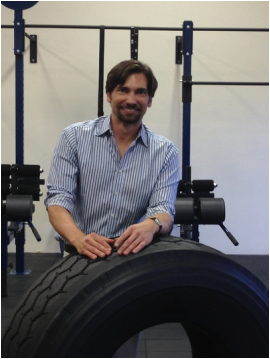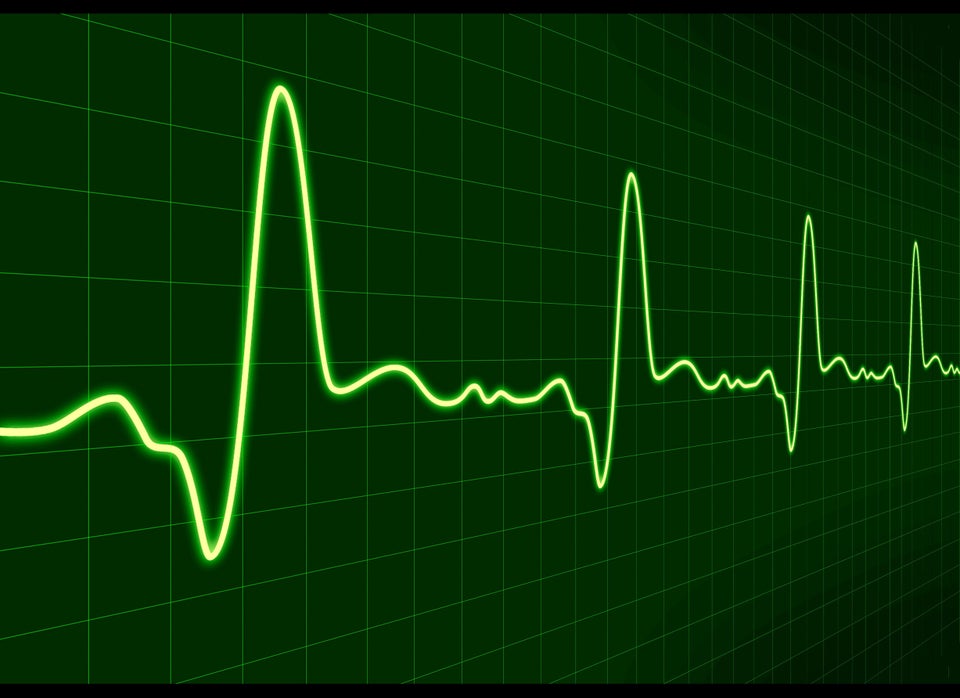After only five years as an internist at Scripps Clinic, in San Diego, California, Dr. David Clayton could tell what was wrong with many of his patients before they even took off their shirts.
They were men, 50 to 80 years old, overweight, with high blood pressure and bad cholesterol -- the perfect trifecta for the chronic metabolic disease currently bloating America. If they did nothing, they might be dead before their time, candidates for diabetes and stroke.
Some 90 percent of people over 60 take at least one medication, and more than one-third of those over 60 are on five or more medications.
And even many men and women who do get exercise and try to eat healthy fail because in this hyper-hyped world of "natural this and natural that," they don't understand the biochemical truth underlying their choices.
So Clayton, 43, launched Club RX, a doctor-directed fitness program that includes a gym, on-site nutrition, a manual -- "The Clayton MD Total Health Program" -- and even a tasty 90-day meal planner. He is the only doctor on site and will work with patients to get off certain medications.
Trainers help with the physical fitness plan, and, In time, Clayton plans to add clinics in Los Angeles, Encinitas and Mission Valley, as well as a nutrition bar.
As an MD, Clayton will develop a medical, customized plan for clients -- "Extreme Wellness' -- which in some cases is covered by insurance (with a copay.) Use of the gym and trainer, as well as meals, are extra.
INTELLECTUAL CAPITAL talked with Clayton at his gym in Sorrento Valley as a smoothie machine whirred in the background and 14-pound medicine balls thumped off overhead disc targets, a bunch of surprisingly game middle-aged dudes scrambling behind us.
Q: You have a business degree from Columbia, and you were even a biotech analyst at Goldman Sachs before returning to doctoring. How does an MBA treat medicine differently?
A: As much as this program is fundamentally grounded in good science, what happens when you put an MD with an MBA degree in a primary care office is that they listen to what patients want. What my patients told me was, "I don't want to be on medication. I don't want to worry about the side effects."
That was the unmet need in the marketplace, the kernel of inspiration for this place, to provide patients with a resource that didn't exist, and that is the single benchmark that I grade myself on: How many medications can I get my patients off of?
Q: It's certainly a unique approach-- a doctor and a gym.
A: The uniqueness is twofold -- the nutrition plan and the exercise plan. Nutrition and exercise are two areas where American medicine and pharma companies are really leaving patients to figure it out on their own. Having somebody on-site who can credibly read the blood and other stats from your own physician, and then monitor your progress from a medical standpoint to make sure you are achieving those goals -- there is really nothing else like it.
Q: What do you tell most clients they can expect?
A: Over three months, reductions in blood pressure of up to 40 points, lowering of cholesterol by up to 60 percent, reductions in blood sugar of 30 percent, a loss of 40 pounds or more.
Q: That's bold. What's the nutrition component?
A: We all have heard enough about nutrition. The hard part is sorting through the noise to find the few important tips that will really move the needle on your health, then applying them every day. I've distilled all of nutrition down to these five points -- ancestral diet, sodium and potassium, fiber, healthy fats and antioxidants. If you can get these right every day, then all the metabolics are improved.
Q: Ancestral diet?
A: Essentially what is called the Paleo diet, which looks back at the evolution of our species and a reliance on an all-natural diet, since many of the metabolic diseases you see today come from our being outside the time and lens of our natural habitat, and suffering the consequences.
However, the modern implementation of that Paleo diet has led to an Atkins-type diet, very meat-centric, heavy on calorie-rich foods, dates, coconut, that may not allow most people to reap health benefits. It is a bit "culty," for the 20-year-old athlete rather than for a grown-up looking for optimal health.
What I've done is bridge that evolutionary construct for disease and draw the connections to what modern medicine preaches about nutrition. We are finding the links between that evolutionary diet, the Asian diet, the Mediterranean diet, vegetarian diets, which are all commonly associated with heart health and mainstream medicine.
Q: So meat is OK?
A: Grass-fed beef is fine, but the diet emphasizes fish, more vegetables, more nuts, above all more fiber. All the meals we provide are designed to give optimal amounts of Omega-3, potassium, fiber and antioxidants while staying consistent with the ancestral or Paleo diet.
Q: So the meal plan here, the recipes in your new book, the chef who cooks the frozen meals -- it's better to tell guys what to do?
A: What I found after a number of years as a physician at Scripps, a lot of people want to know exactly what they should do. If you want to cook for yourself, we provide the recipes. If you don't have the time, we provide the food. If they are here, they want to change. Our job is to make that change as easy as possible.
Q: Don't some people simply need their medication?
A: You won't know what type of medication you need until you get off the ones you can get off of. As they say, results may vary, and genetics are obviously a component, but if we can catch you in the early stages of high blood pressure or diabetes, and you are taking only one or two medications, that's a good indication you will be able to get off all of them.
However, if you are taking four medications to control your blood sugar, you know, that may not be the goal. The goal in that case may be that you live 10 years longer. You manage your blood pressure as optimally as you can, and you don't need that fifth or sixth medication. You don't end up with a neuropathy (numbness in your limbs). You don't end up with a stroke. Even though the train has already left the station, we can still stop you from getting worse.
Q: And the exercise? How do you get guys interested?
A: This is competitive, and it's very intense, and it is anything but boring. We are always catching you off guard, and we are putting you on the clock against your teammates. It definitely taps into that alpha male adrenaline rush of exercise. There's nothing more boring than sitting on the bench doing bicep exercises by yourself.
Here, you are doing jumping pull-ups, timed on the clock against four or five of your contemporaries, or partner work, Olympic strength training structured at different entry levels, kettle ball exercises, medicine ball drills, tire pulls for your spare tire.
We design from a core medical perspective based on who you are, from some guy who can't do a single push-up to one 67-year old Marine who could scale the rope to the ceiling but who still suffered from the same metabolic conditions afflicting other adults his age.
Q: Is this all your invention?
A: I like to think I've taken the best from yoga, from Pilates, from CrossFit, which is designed for elite 22-year-old athletes. Our workout uses a lot of the same fun toys as CrossFit but in a routine more manageable for a grown-up.
Earlier on Huff/Post50:


